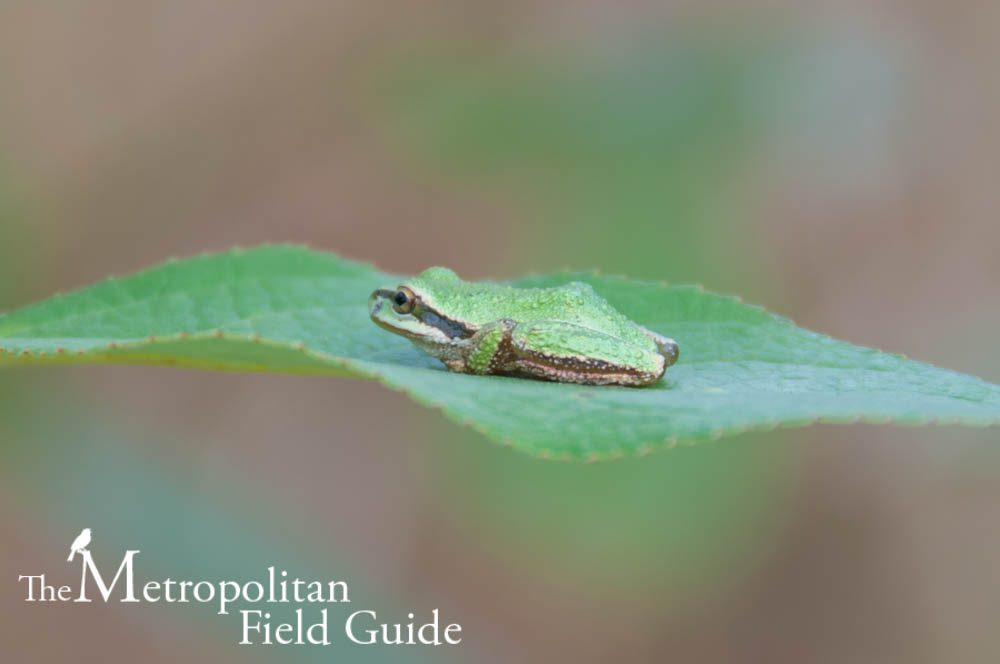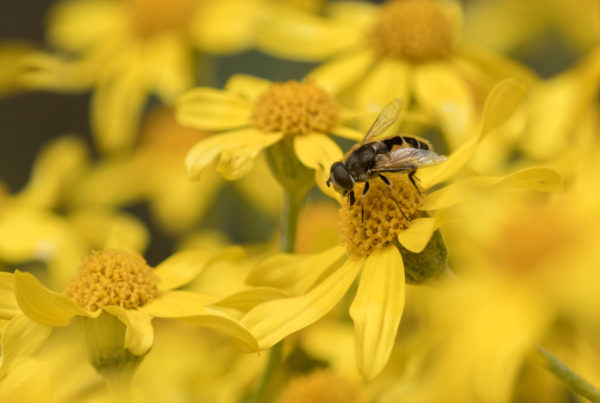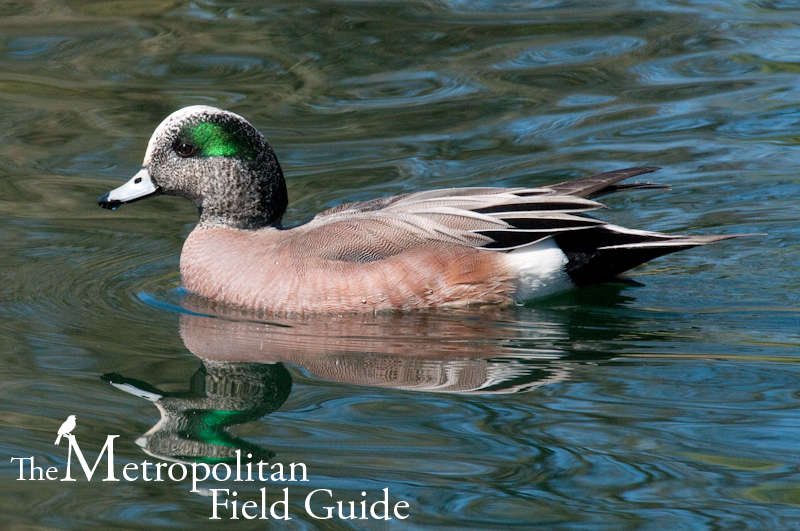Common Name: Pacific Chorus Tree Frog
Scientific Name: Pseudacris regilla
Family: Hylidae or Pseudacris (under debate)
The most widespread and abundant frog in the Pacific Northwest, the Pacific Tree Frog is also known as the Chorus Frog because they are one of the few frogs in the region which are often heard. Occurring from British Columbia south to Baja California, they also range to the east to Montana. They breed in a large variety of freshwater habitats including ponds, wetlands, lakes, slow streams as well as man-made structures such as retention ponds, ditches and reservoirs, most commonly in fishless bodies of water. Their ability to lay eggs nearly anywhere in a wide range of climates and habitats is likely responsible for their success. During the non-breeding season their range expands to any moist habitats including riparian corridors, woodlands, wet meadows and urban areas. In these habitats they can often be found under and in spaces such as rocks, logs, debris piles, rodent burrows and even buildings. It’s thanks to this habit of sheltering underground that led to the Pacific Tree Frog being one of the few survivors in the blast zone of the Mt. St. Helens volcanic eruption. Despite its name, the frog is usually found on the ground, but it has the ability to climb high into vegetation.
They are small, only between 3/4-2″ in size and vary in color from the most common brown and green to grey, bronze, black and even reddish. Nearly all of the color variations have a black eye stripe and many also have dark streaks on their back. During the peak breeding season, which is January and February, they can be heard all day long in large choruses as they defend their territory and attract mates. In fact their croak is so iconic of frog calls that it’s often used in movies, despite their limited geographic range. They’re also more likely to sing during rainy days. They lay as many as 750 eggs consisting of many egg clusters, each containing around 15-30 eggs. These clusters are attached to vegetation or other objects in the water. The tadpoles, which spend 2-3 months in the larval stage, will feed on a wide variety of small organisms underwater including algae, bacteria and even inorganic debris. Adults use their site and long, sticky tongues to feed on all manner of invertebrates including snails, spiders and insects such as beetles, ants and flying insects. Predators include birds (such as herons), fish, herps including snakes and larger frogs and small mammals such as raccoons, skunks and otters.
The Pacific Tree Frog is the most likely frog to be attracted to an urban area. Ways to attract them include avoiding pesticides, which poisons not only them but their food source and reducing the amount of maintenance which can destroy their shelters. Also provide basking sites in and around the water, add shelter such as piles of rocks, boulders, logs and wood piles and leave the leaves on the ground under trees and shrubs. If your site is adjacent to a retention pond, riparian corridor or other water feature, provide a buffer along the edge of the water. Provide and preserve migration routes along your site that will allow the frogs to move from breeding sites to non-breeding sites. Providing a pond or water feature can also help attract the frogs to breed and lay eggs. Even ponds that dry out during the summer months can be suitable for the frogs to breed and lay eggs in. Some good pond vegetation options are Creeping spike-rush (Eleocharis palustris), Small-fruited bulrush (Scirpus microcarpus) and Taper-tipped rush (Juncus acuminatus). However, if the site is surrounded by paved and highly maintained landscapes, it’s unlikely the frogs will find their way to a pond without a migration corridor of wild vegetation and shelter. For resources on creating a wildlife pond see Rain Gardens & Wildlife Ponds.
Further Reading







Thanks for the info! I always wondered about their name because I’ve seen them on the ground.